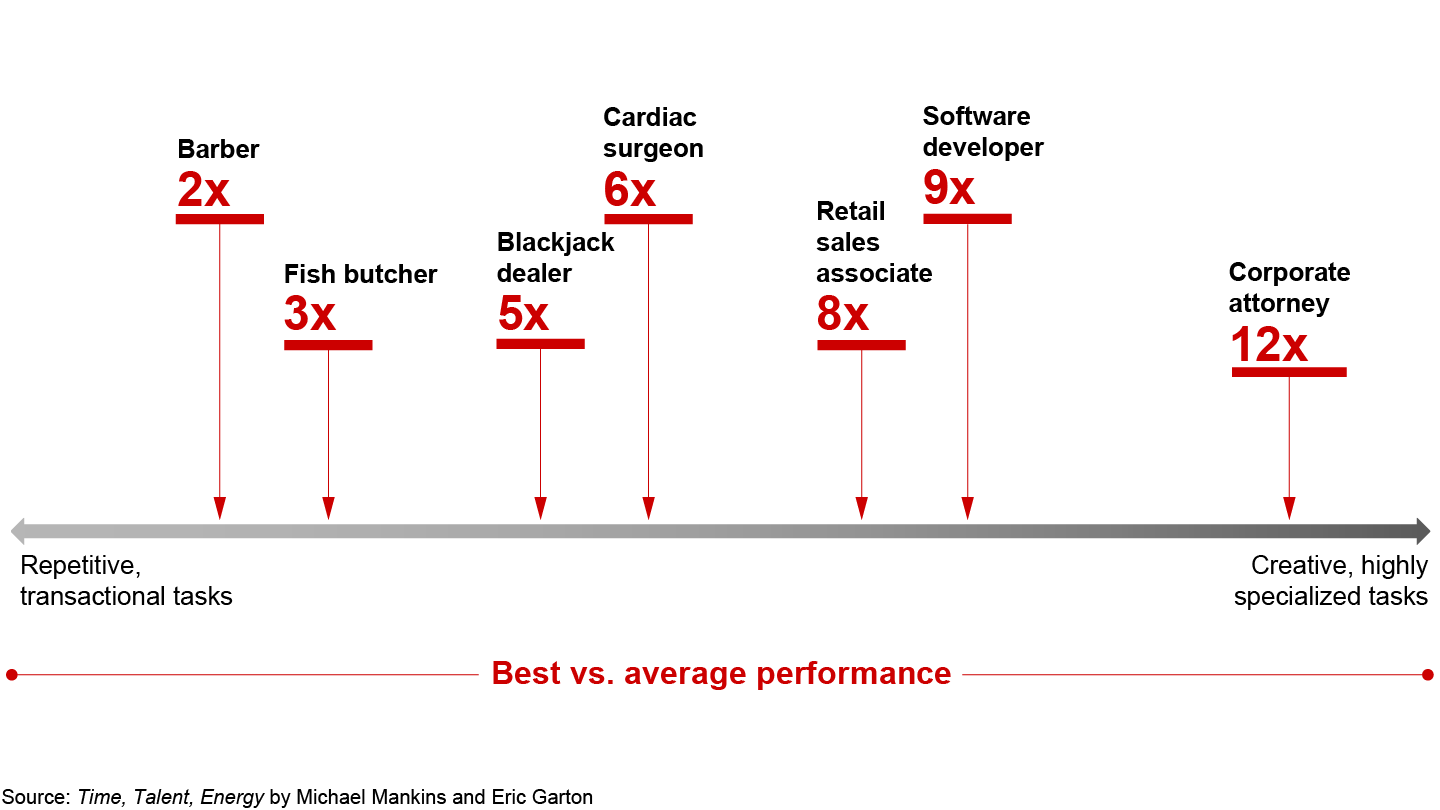Article

Work has never changed this much, this fast.
The severity and speed of Covid-19 has forced a radical change in the way businesses organize their workforces. With the utmost urgency, businesses have had to get their best talent working on their most critical tasks, from business survival to growth and innovation.
In times of crisis, talent reveals itself, and Covid-19 is helping companies recognize those who create disproportional value for the organization. Freeing up critical talent to combat a challenging situation, restaurant chains have galvanized behind delivery services, consumer products companies have focused on getting key items to customers, and hotels have begun to reimagine what hospitality looks like—all while moving to virtual working. Now, the key will be to make sure that this critical talent, these difference makers, don’t, once again, get spread too thinly after the crisis has passed.
While researching their book Time, Talent, Energy, our colleagues Michael Mankins and Eric Garton quantified the difference between an average performer and a top contributor in a number of different types of work. The best corporate attorneys, they found, perform 12 times better than average; the best software developers, nine times; the best cardiac surgeons, six times (see Figure 1). They also found that top companies make the most of their best people, with top talent filling 95% of their business-critical roles, while other companies fail to focus their best people on their most important work, spreading their stars evenly across all roles.


Naturally, great performers are who you want when launching any business-critical assignment. Yet, how many frustrated managers have identified a rock star to lead a critical strategic initiative only to struggle to break them free from the less essential role they already occupy?
One common workaround is to position the new role as a great “step up” opportunity that should only require 10% of the star’s time. Excited about the work and committed to getting results, the star and his or her team make great progress at first. But as time passes, progress slows, and energy and focus start to wane. Employees, piled with work, struggle to keep up and even burn out.
What happened?
Every company has to simultaneously run its business and change its business. But when it comes to human capital, those “change the business” growth projects more often than not are denied the resources they need. Ten percent of the time of a star employee who already has an important “run the business” job is not going to cut it. When push comes to shove, “running the business” always feels more urgent. No surprise then that these “change the business” efforts rarely do.
Some companies have broken out of this pattern by focusing on four things:
- Know your most important roles. Leaders must have a clear grasp of mission-critical positions across operations (“run the business”) and innovation (“change the business”) if they hope to ensure that the best people are filling the most important roles in both.
- Know who your top talent is. Who are the best people in the organization?
- Know what your top talent is working on. You should have as clear a view of how and where your human capital is deployed as you do of your financial capital. Whether you have a fancy HR system with all the bells and whistles or a simple spreadsheet, this can be tracked and used in a disciplined way. Absent this holistic view, leadership simply can’t get the best people in the key roles.
- Make the tough trade-offs. Ten percent of someone’s time is rarely going to be adequate. Top talent will have to spend less time on their day job if you want their growth initiatives to have a real shot.
A European consumer products company is deploying this approach successfully. The company generally keeps its centralized functions lean, believing that most work should be done in local markets. But when launching companywide innovation initiatives, management wanted to attract local market high performers to lead them. To get them, managers ensured that the star’s next step after the innovation work would take them back to local operations but in positions of greater authority. So, once an innovation is successfully launched, its leaders begin to transfer responsibility for its further growth to the local market, in effect making their own job redundant. The results of this approach have been strong. The innovations launched so far have a strong record of success, and the company has forged a repeatable model for attracting top talent to the center to run important initiatives without delaying their long-term career trajectory.
With the rapid changes forced by Covid-19, many companies have a sense of momentum and a fresh understanding of what is possible. Challenges and opportunities arise constantly in business. Swift and successful response depends on knowing who your most valuable players are and being able to deploy them. Trade-offs will have to be made to get them where they are needed most.